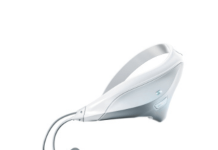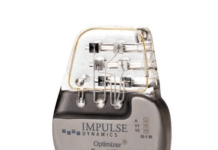First Databank has partnered with Parker Health to expand the country’s second e-prescribing network, FDB Vela, while improving the sharing capabilities of critical prescription information and up-to-date patient records.
The platform now boasts better abilities to reduce medication errors, avoid drug interactions, shorten the time between prescription and treatment and decrease abandon rates at pharmacy counters. With FDB’s med-knowledge database and Parker Health’s electronic heath records, providers will see real-time treatment decision support along with the ability to offer patients improved out-of-pocket price transparency and expedited prescription retrieval. FDB Vela was announced in March of this year, joining the previously solitary SureScripts in the market.
“We partner with our customers to help improve safety, especially for patients, the efficiency of the workflow for providers and for pharmacists,” Lathe Bigler, general manager of FDB Vela. said in an interview. “And so as we began doing this, we realized that there was another element to it. It’s not just about delivering the content, but it’s also delivering the actual transaction and communication between one stakeholder and another stakeholder.”
Merging the cloud native electronic prescribing network with Parker Health’s EHR allows for the display of up-to-date records relevant to prescribers, payers and pharmacies in one place. That means avoiding misdiagnosis and mistreatment due to allergies, preexisting illness or poor drug combinations. By adhering to National Council for Prescription Drug ProgramsNCPDP script standards and supporting all message types, FDB Vela allows for a seamless flow between various stakeholders, according to the company.
“It’s about the interoperability of data: being able to see patient data, being able to use that as best as we can to understand what we’re providing for patients, being able to build technology and build an innovative platform that is cohesive across all aspects of healthcare is very key for what our partnership is bringing to the table,” said Vincent Lopez, Parker Health founder and CEO.
The application is designed around the most advanced standards, including the application’s status as the only Fast Healthcare Interoperability Resources (FHIR)-compliant full-stack solution on the market.
With time, the partnership hopes pharmaceutical recommendations become better tailored to patients’ unique needs while also feeding back into research and development.
RELATED: Teleflex Partners with FundamentalVR to Enhance Training through VR Simulation
“Our entire system is built on artificial intelligence and machine learning, being able to predict what we consider recommending versus the actual clinical recommendation is being able to suggest outcomes that are available there: If this drug is maybe not the appropriate drug, if this diagnosis missed something, how do we engage at that level,” Lopez said. “We’re not replacing the physician or the prescriber, but we’re actually providing more context and data to say, ‘Hey, look, maybe we should look at this again or in a different way.’”
Along with decision support, real-time pharmacy benefit tracking is shared during a patient encounter to create a new level of price transparency in an effort to cut down on abandon rates at the pharmacy.
If the ideal prescription happens to be a specialty drug, the application comes into special use. Currently, the average specialty drug, think complex medications for cancer or rheumatoid arthritis, demands on average 20 days to be filled, according to Bigler, who says the hold-up is red tape.
“We have APIs [application programming interfaces] that we provide to Parker Health’s FHIR-based solution; what makes this really ideal is that we can access all the clinical information that we need that goes along with a specialty prescription,” Bigler said. “So imagine if you will a prescriber writing a prescription electronically in Parker Health and having that automation all there.”
Faxing, calling between hub services, communicating with the patient and the patient’s insurance, all that can add up to 24 days, according to Bigler. In one example, with the use of Parker Health and FDB Vela, the wait time was whittled down to just three hours.
Are you hiring ?






